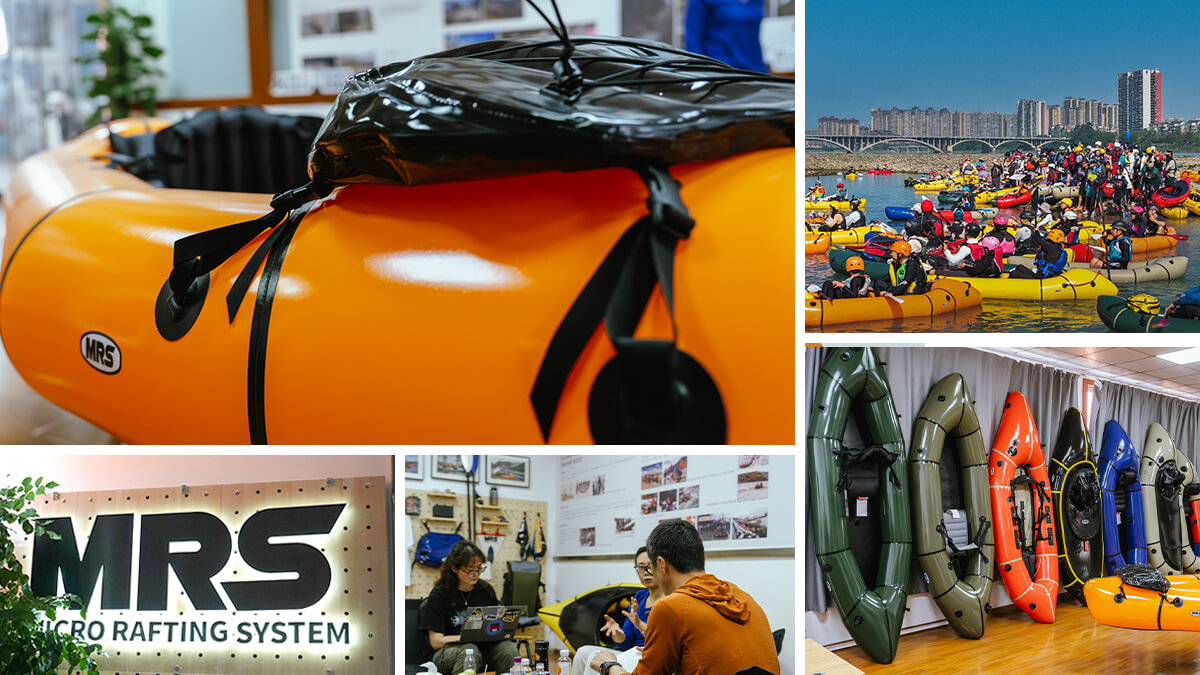
A story about a trip to Sichuan Province, China to start playing pack crafts [Part 2: Interview with MRS Founder]
Last time, we reported on the trigger for our visit to Packraft manufacturer MRS and how we visited China.
Previous article
This time, we will finally be sharing an interview with MRS founder and designer Luo.
The location is a room in an MRS office on the outskirts of Chengdu. This room, which is connected to the showroom, is lined with pack rafts and related accessories made by MRS, and the walls offer a panoramic view of the development of pack rafts in China, making it a room where you can experience the "now and the past" of pack rafts in China.
table of contents
- An encounter with pack crafts with outdoor experiences from childhood
- The trigger for developing a pack craft
- Commitment to the product
- Luo's outdoor life and the future of the pack raft market
- Summary: Borders have nothing to do with manufacturers trying to make good things. What's more, is respect and curiosity towards nature, and sincerity towards the user
An encounter with pack crafts with outdoor experiences from childhood
In the first place, why did world-class, high-quality, authentic pack raft manufacturers emerge in China, a so-called outdoor developing country? First of all, I couldn't help but ask about the origins of its connection to the outdoors. What was Luo's childhood like?
My father, who was a teacher when I was a child, often took me out for outdoor play.
Of course, there was no word "outdoor" at the time, and we weren't doing any activities that were clearly known. What I remember is that the family and we boarded a long-distance bus that we had no choice but to decide where to go, and then got off at the bus stop we felt like, "This station name is wonderful. So let's go here today." The usual thing was that the father himself didn't know where it was. From there, you can explore the area by leaving it to interest. I used to play every week, walking barefoot when I was tired, or being treated to a foodie when I visited the farmers there, and the whole surrounding countryside was an adventure field.
All of my other friends went to cram school, so now I think they might have been a different childhood than others.
I believe this experience has not only been useful for understanding the value of nature, but also for my growth as a person. There, you naturally meet strangers and talk about various things whenever you go. This has made it less of a pain to communicate with people, and has helped me develop my skills and adaptability in a broad sense to get to know others.
Are there any memories of "water sports," which lead to the creation of pack rafts today, from when you were little?
One of the things I've been playing around since I was 5 or 6 years old was rowing boats. I'm sure it was a canoe at the time.
His father is really good at negotiating and has excellent communication skills. Of course, I didn't own a canoe myself at the time, so when I tried to play with a canoe, I had no choice but to rent one, but of course, there's no way I can afford it as cheap as I like. At that time, my dad said, "It seems like there are currently no customers, and if we see us having fun, other people want to do it, and customers will gather. That would be an advertisement, so why don't you let me use it for free?" and then he would negotiate well and borrow it for free!
Although it's a small episode, looking back now, I feel like I was learning from this experience as a child that "the possibilities are endless." This kind of experience may have grown up to me as I want to try it, even if there are no rails in front of me, no maps, or no precedents.
The trigger for developing a pack craft
When and why did Luo, who has been specializing in playing since he was a child, decide to make his own pack raft? The origin of making pack rafts began with ingenuity and ingenuity during play.
In this way, as it has been a common occurrence to play in nature since ancient times, I decided to make it myself, wondering if I could somehow make the boat I used while playing (at that time, kayak) that I had been using for play that was easier for me to use. That was a sudden desire that started off. Of course, I was working at the time, so at the time I had no ambition to turn this into a business.
That's why I decided to ignore costs and create the ones I would most like to use most. We also used the best materials available at the time. I was satisfied with the boat I had thus achieved, but it was even more popular with my friends, and I started building boats for them.
Eventually, I began to study not only kayaking but also various styles of ships, but I eventually started to focus on pack rafts from a wide range of paddle sports. This is because the characteristics of TPU material, lightweight, easy to use, and resistant to damage even in cold regions, are considered to be the most suitable for river hanging out in China, especially in Sichuan.
Incidentally, at the time, the pack raft market in China was not satisfied with domestic products (although it has remained almost unchanged), and most of the imports were imported from overseas, so after-sales service was not expected. For this reason, I had no choice but to improve and make what I wanted myself. Of course, at first I took some inspiration from products from Alpacka Raft, a top manufacturer that I still admire today. However, we have started the challenge of creating new pack rafts from scratch as our business, aiming to create products that fit us more with the smallest details, such as sizes that are more suited to Asian physiques and softer structural designs.
Commitment to the product
It is said that there are over ten pack craft manufacturers in China. However, most of them produce cheap imitation products, and few manufacturers like MRS produce "real" products that can compete with foreign brands, focusing on quality and originality. What is the difference between MRS pack rafts compared to other manufacturers?
There was a deep insight that only Rao could understand, as he is a genuine outdoor enthusiast and has gained years of experience in creating his works from scratch on his own.
What we consider to be the most important thing about MRS products, or "commitment" in a nutshell, is "balance." The performance and quality of a Packraft product exists as a product that is intricately intertwined with various factors, such as lightness, durability, stability, straightness, operability, and ease of use. The most important and difficult part is how to balance these into a product, in order to match a variety of needs and concepts. Even if you try to bring together elements that are well-received, you will never be able to create a good product. We sometimes refer to products from other brands, but even then, it's important to know how to make use of them in the balance of MRS, rather than simply incorporating the good parts.
Another important thing is that we develop our own fabrics of reasonable quality. For example, we seek excellent materials not only domestically and internationally, such as polyester TPU made in Germany and nylon 66 made in Taiwan, and we also carefully select the best materials by specifying them in detail for each factory. Of course, this is not the end. We are constantly catching up to the cutting edge, and even today, we continue to make efforts to further improve our products by visiting and checking them out when we hear that there are better materials or better factories.
Not only pack rafts, but now we are working on a variety of accessories, including PFDs (life jackets) and backpacks, but developing new products takes at least a year from design to material search, testing and improvement. When I play in the river with my family on my days off, I usually try new models as a test, and I always test some prototype, so I can say there is no time when I'm not doing it. In addition, we place emphasis on feedback from the field, and reflect the models in the design, and also test them on site. Even after the release of the first version of the product, we will continue to improve it if necessary. By continuing this repetition, you will be able to complete the ease of use and balance that users actually want. As I took it, partially imitated counterfeit products do not have this process, so they are not truly a good product. I think it's a big strength of MRS.
Luo's outdoor life and the future of the pack raft market
Luo, who often enjoys the outdoors with his family on his days off, sees the changes in his awareness and involvement in China. And what about the global pack craft market going forward? What are your thoughts on entering the Japanese market in earnest?
I value my time with my family on my days off. Hiking, biking and of course rafting, the whole family heads out into the field. Chengdu is home to mountains and nature that are just a little over 30 minutes' drive away, and it is crowded with many people on weekends. However, we often go to areas where there are not many people going. Even if you drive for a full-scale climb, if you drive for about three hours, you will find a large mountain (Shigugu Mountain), and Chengdu is so blessed with nature.
However, in terms of the overall outdoor (pack raft) market in China, when it was founded (around 2010), the Chinese pack raft market was so small that it could be said that there was almost none of the Chinese pack raft market, and even if the Beijing Olympics had been a little excited, I don't think there was much awareness or leeway among the general public to spend money on leisure. Since then, the focus on the outdoors has increased due to the COVID-19 pandemic, but due to the reaction to this, it is not yet possible to say that outdoor culture is still ingrained in the country. Another reason why the development of the Chinese market is difficult is the insufficient protection of intellectual property rights. If new products are deployed domestically, there is a high risk of plagiarism, including design, so the Chinese market is very likely to waste development at a high cost.
Therefore, the most important market for MRS is still overseas. Although it is simply called overseas markets, I have a good understanding of the need and business practices vary greatly from region to region. That can be said in Japan too. In this way, we obtain raw information from people who know the local market, and spend a lot of time conducting preliminary research, valuing cooperation with local agents, and proceeding with care.
However, we are not giving up on the domestic market. Nowadays, we are constantly setting up a system in place to check on intellectual property management professionals, including online, by preventing problems before they occur, while aiming to expand soundly in the market. On the other hand, MRS continues to make various attempts to increase the number of pack craft users in Japan. For example, we hold various events throughout the year, both online and offline, and are working on an approach that allows people who have not been interested in the outdoors to experience it in a familiar way, even for the first time. Just two days later, we will be holding a pack rafting event where we will go to Chengdu Street to see the thousand-year-old Leshan Great Buddha, and more than 200 participants (133 boats), including complete beginners, entered the event (see the report here for details on the event, " Paddle Leshan, Marvel at the Giant Buddha 2025 "). Although the population of pack crafts is not yet as high as mountain climbing or cycling, I feel that it is steadily increasing.
is working with local universities to promote a program to protect alpine ecosystems, including , an endangered species that lives in the Sichuan Nature Reserve area of Sichuan Province Including these activities, I would like to continue to carry out various activities to ensure that the pack craft culture is rooted in a sustainable way.
Summary: Borders have nothing to do with manufacturers trying to make good things. What's more, is respect and curiosity towards nature, and sincerity towards the user
MRS (Instagram account)
The interview lasted two days, and they talked about a wide range of topics besides what is written here, and they also talked about Japan from here, so we were able to spend an intensive time, as time passed in a flash despite our first meeting. Among them, what really left an impression on me was Rao's strength as a person, beyond his nationality and title (which is hard to imagine from his external impression).
The passion and respect for the outdoors, the depth of lovingness to be sincerely able to face everyone, the strong will and courage to resist adversity, and the childlike curiosity of how Luo speaks, and all of his deep humanity is embraced by the MRS brand and is shaped into a product. I couldn't help but think that I would be more happy if I could be surrounded by the tools that people make, and that I could face nature with such tools.
We will continue to keep an eye on Packcraft and MRS products more and more. We will be gradually starting articles on pack crafting experiences at MRS, so please look forward to it too.




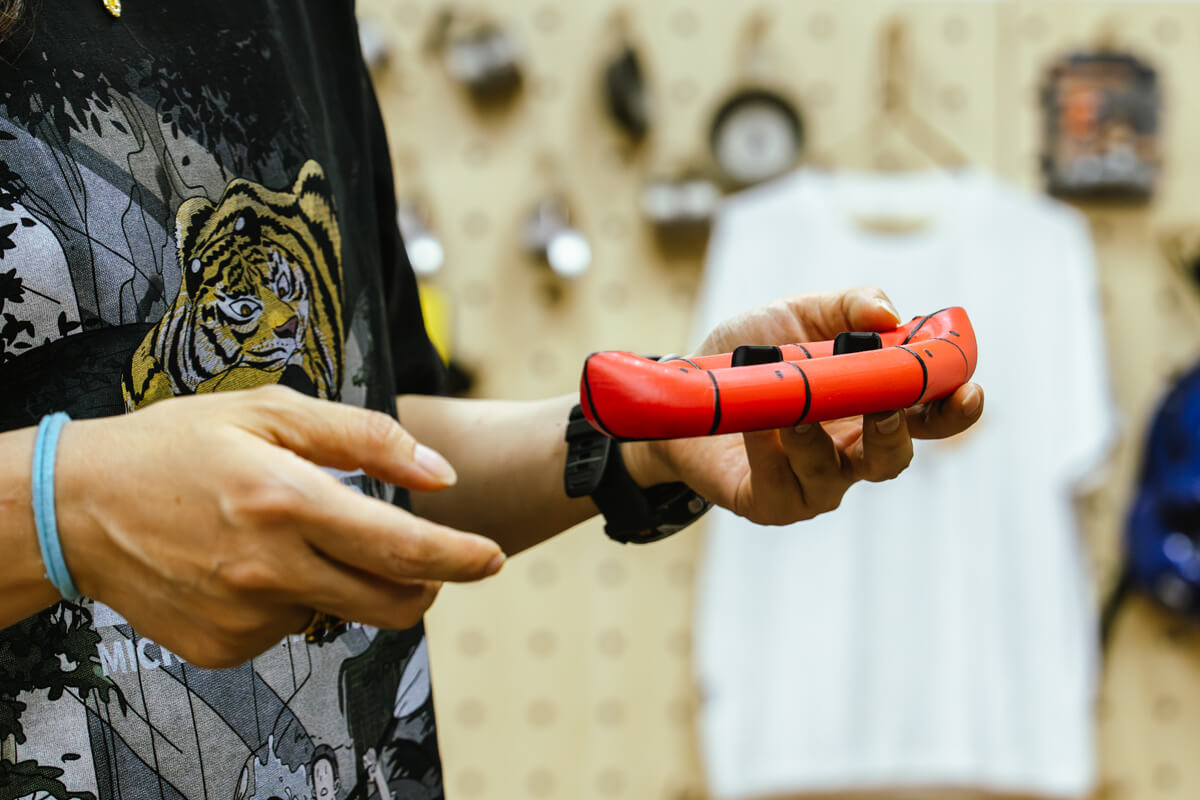
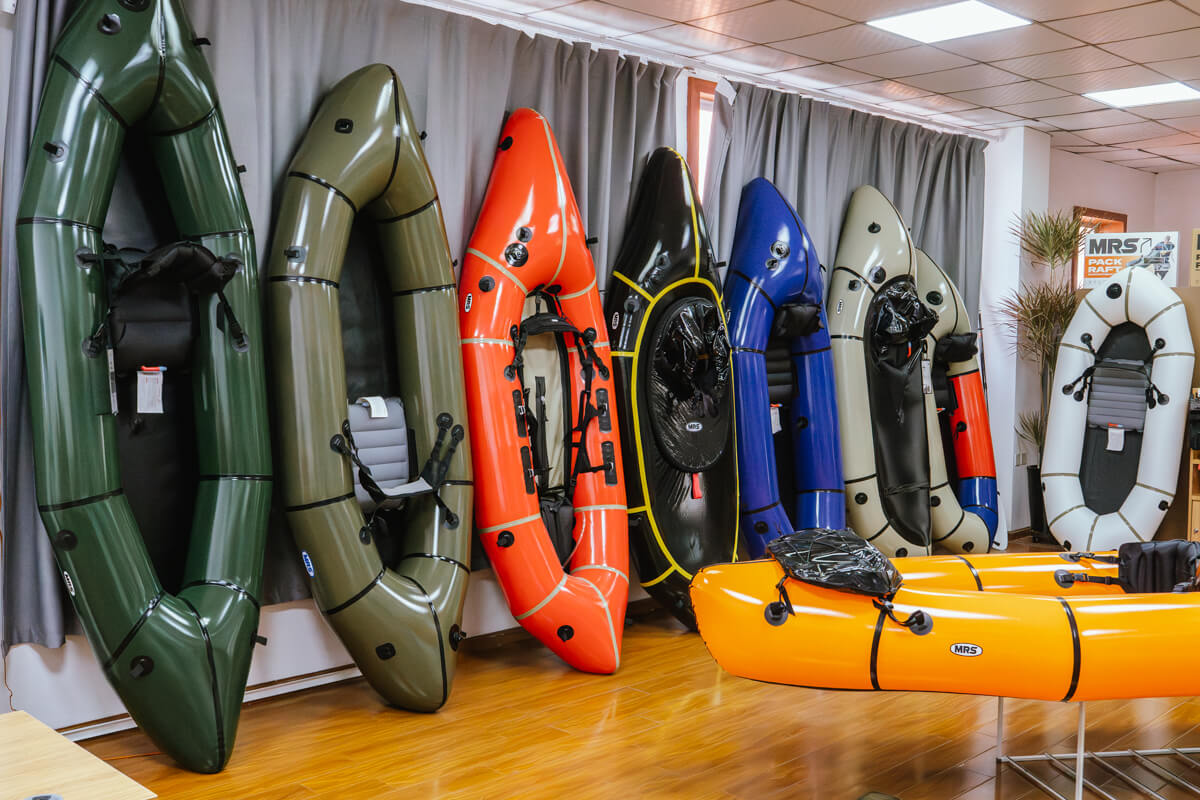

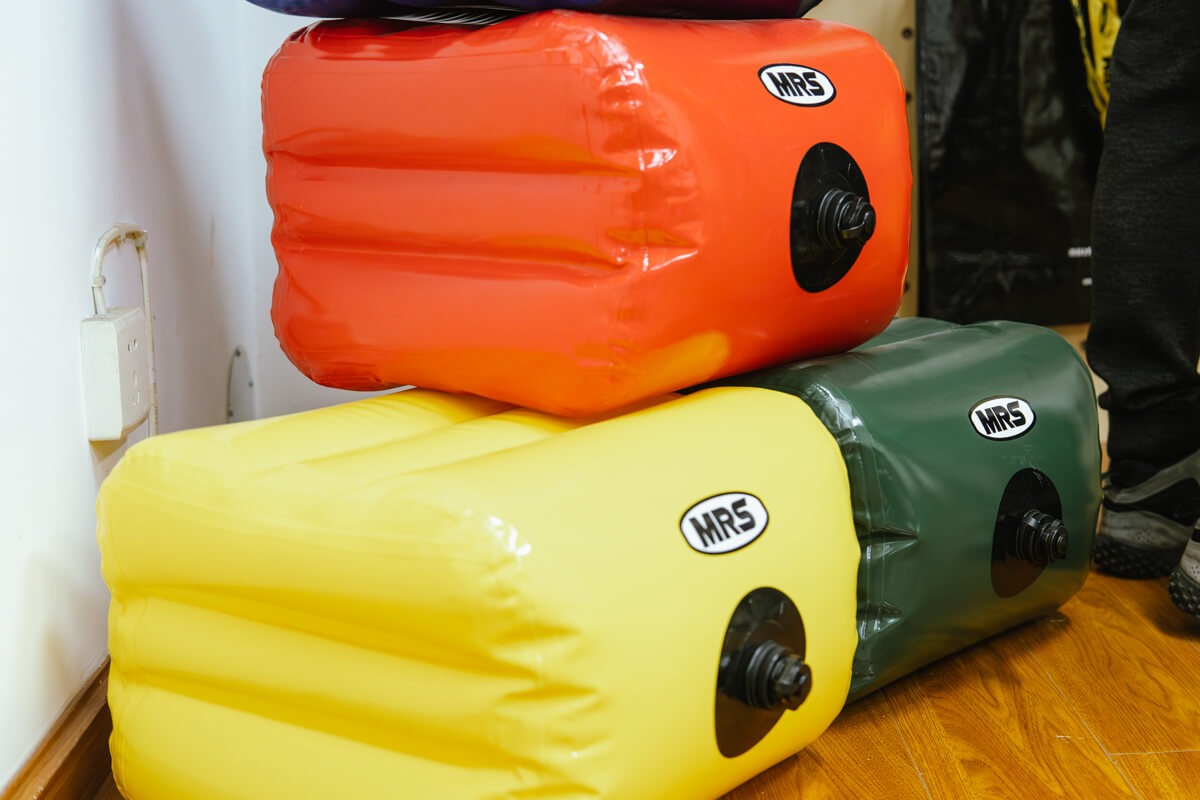
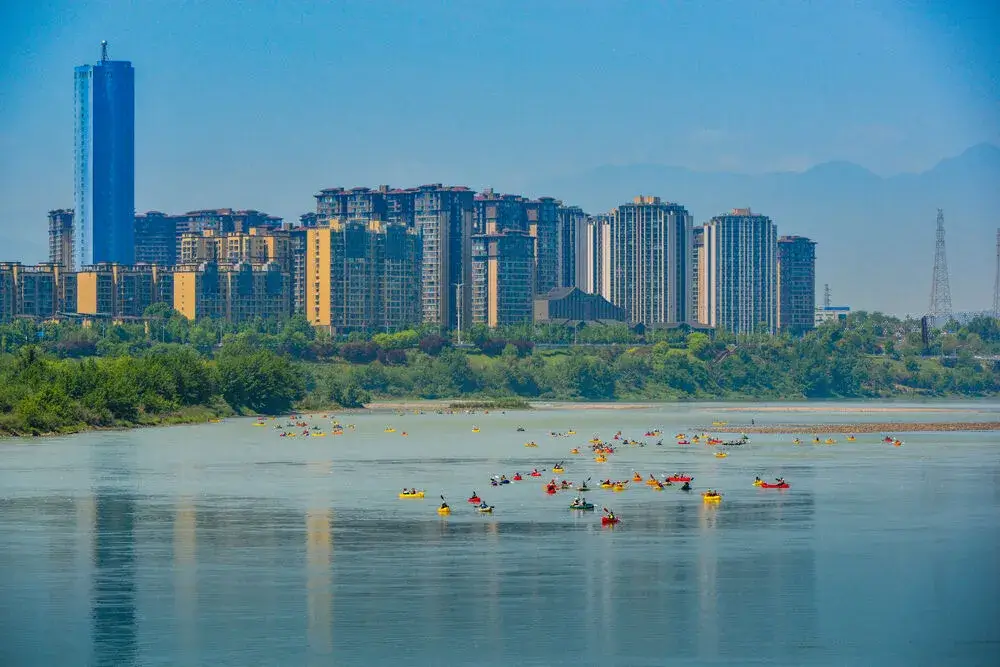
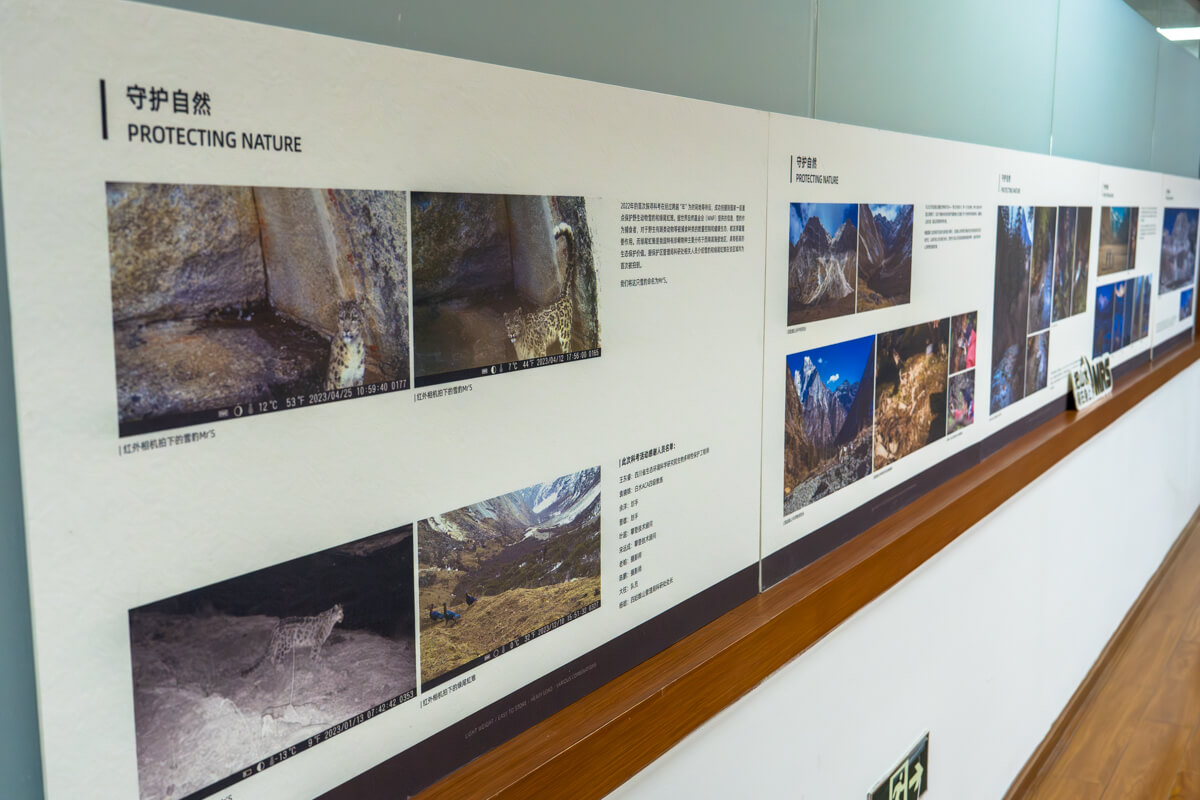

 A story about going to Sichuan Province, China to start playing pack crafts [Part 1: China, the first time in 8 years, was too exciting in many ways]
A story about going to Sichuan Province, China to start playing pack crafts [Part 1: China, the first time in 8 years, was too exciting in many ways]